News
Washington Water Trust: Q&A with The Russell Family Foundation
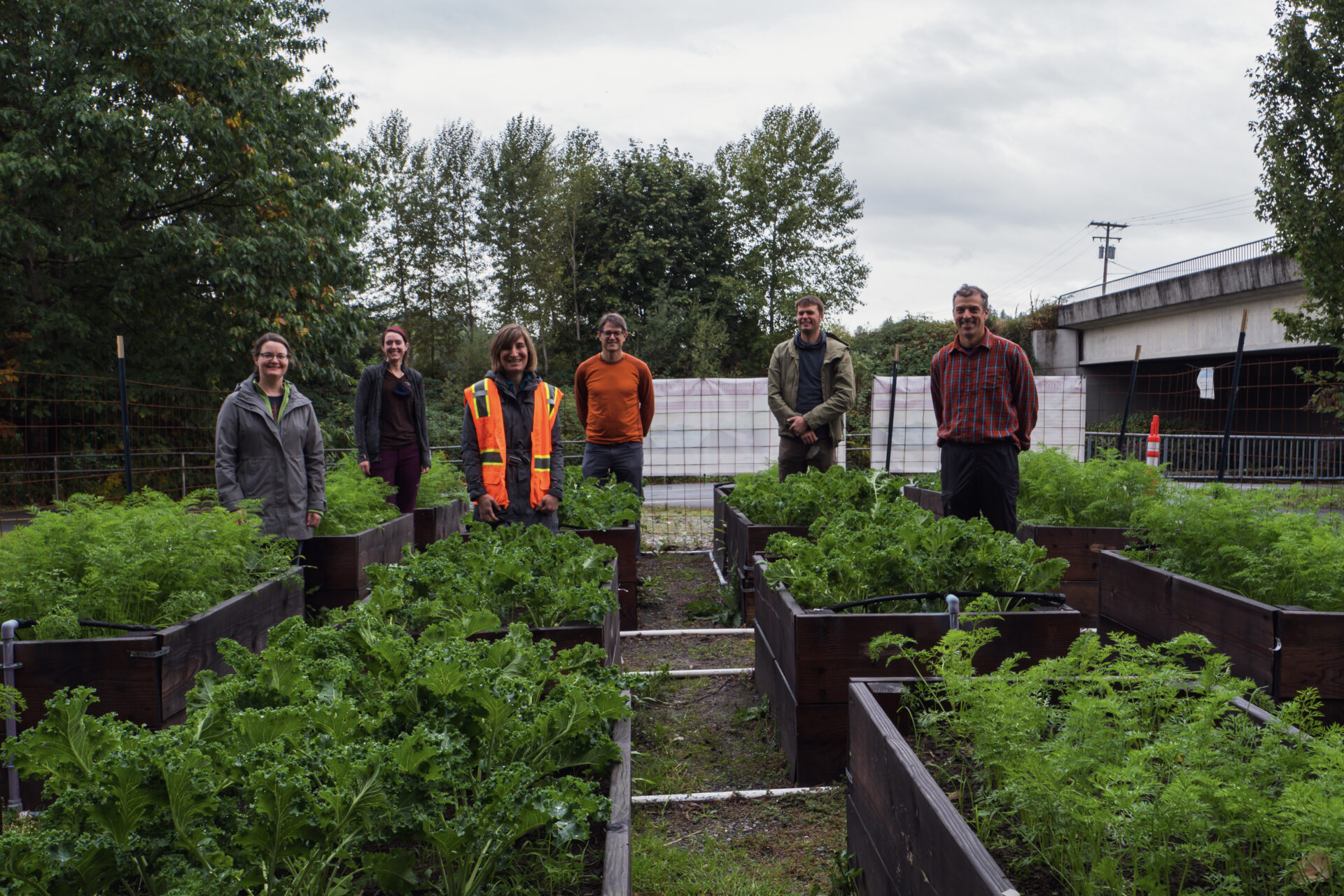
Organization Overview
The mission of the Washington Water Trust (WWT) is to protect and restore rivers and streams across Washington so that fish, farms and communities can thrive for generations. Our work enhances quality habitat for salmon, steelhead and other species including the communities that depend on abundant cool, clean-flowing freshwater.
Since 1998, WWT has implemented projects throughout the state from the San Juan Islands to Walla Walla spanning rural and urban locations. As a result, we have restored 5.7 billion gallons of water to salmon streams across the state annually.
Our 14-person staff based in Seattle and Ellensburg uses a range of tools to restore flows including water rights assessments to prioritize our work; leases and acquisitions; groundwater recharge and water banking; irrigation source switches and efficiencies; drought-response initiatives; and developing new sustainable water sources. These approaches rely on our engagement with a wide range of people and groups including tribes, farmers and landowners, businesses, irrigation districts, government agencies, and others to ensure effective strategies match the instream flow need for each river or stream.
Q: How is Washington Water Trust addressing the climate crisis?
A: Washington’s freshwater resources are increasingly strained from the climate crisis. Although often thought of as a water-rich state, many of Washington’s salmon streams suffer from low flows—particularly during the summer months—due to a long history of over-allocation, inefficient water use and now, exacerbated by climate change.
The projected climate impacts on Washington’s freshwater resources are alarming. According to the University of Washington’s Climate Impacts Group, by the 2080s, snowpack in the state will decline by 56-70%, summer streamflow will decrease by 34-44% on average, and many salmon streams will face lethally hot temperatures throughout the summer (Snover et al, 2013).
To address climate impacts, WWT is focused on restoring water to our rivers, streams and aquifers so aquatic and human communities that depend on them can thrive for generations to come. For over 25 years, we have used market-based solutions to restore and protect water instream when and where they are needed most. Our proven methods to restoring flows have been the purchase and lease of water rights to protect instream and improved irrigation practices to reduce overall water use.
However, climate change has compounded our water challenges, necessitating the expansion of our flow restoration tools to include groundwater restoration and water banking, special drought-year conservation initiatives, and development of new sustainable water sources.
One promising solution is recycled water, or highly treated wastewater, a climate resilient water supply. Every day, millions of gallons of lower treatment standard wastewater are discharged into Puget Sound, driving high concentrations of nitrogen and phosphorus nutrients that disrupt ecosystem functions, including the critical food supply chain for Chinook Salmon and Orca. The opportunity lies in treating this wastewater to a higher (Class A) standard, allowing it to replace current freshwater uses for non-potable irrigation, commercial and industrial uses. This switch would reduce freshwater use and help replenish Washington’s rivers and streams.
To meet both the human and environmental water needs of today and tomorrow, it is essential to consider recycled water as part of a comprehensive water strategy. While recycled water is being used on a small scale in the Puget Sound region, there is significant potential for broader integration into the region’s water portfolio, particularly for food crop irrigation. This “new” water source would improve water quality in the Sound by reducing wastewater discharge, enhancing salmon habitat by allowing more water to stay instream, and creating a reliable climate-resilient water source for local farms. Additionally, access to recycled water could extend opportunities to users beyond those with generational water rights.
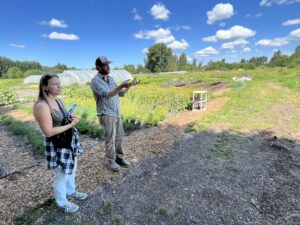
In an effort to expand irrigation with recycled water (with generous support from The Russell Family Foundation), WWT is partnering with four Sammamish Valley farms outside of Seattle—JB Lawns, Viva Farms, Tonnemaker Valley Farm and 21 Acres—to trial the use of recycled water from the King County Brightwater Treatment Plant for their organic produce and landscape plants. This WWT project will bring Class A recycled water from Brightwater in Woodinville to the farms via an existing pipeline that runs to a pump station in the Sammamish Valley. From the pump station, the water will be delivered to the farms either via temporary pipe connections or water tank trailers.
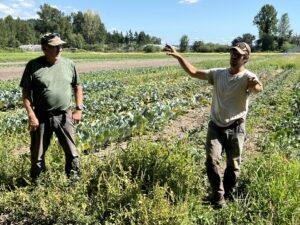
The goal of the project is to allow farmers to field-test recycled water for their crops, demonstrate its on-the-ground viability, cultivate agricultural sector support, and enhance our understanding of this water source. The Sammamish Agricultural Production District (APD), a King County land designation to protect farmland within the county, is comprised of nearly 1,000 acres of farmland. Ultimately, increased agricultural demand in the APD will drive the essential infrastructure investment to deliver recycled water to farms. This infrastructure would enable farms to switch from Sammamish River and groundwater to climate resilient recycled water, improving salmon habitat critical flows in the Sammamish River. If successful, the Sammamish Valley could serve as a model for other areas around the Puget Sound region and across the state, showcasing recycled water use as an effective climate adaptation and water supply strategy.
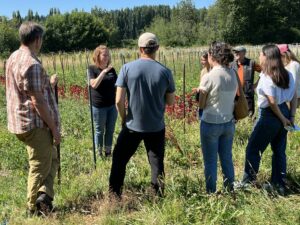
Q: Regarding the Farm and Fish program that you are working on, could you provide more information on the specific methods and technologies that you employ to treat and deliver recycled water for irrigation to the participating farms? What treatment processes are used to ensure the safety and quality of the recycled water for agricultural use? Are there any potential contaminants or water quality challenges closely monitored during this project?
A: The irrigation water used for this project is Class A recycled water generated by King County Wastewater Treatment Division at the Brightwater Treatment Plant. The wastewater is processed using a tertiary system with membrane bioreaction (MBR) technology and continuously monitored for contaminants. Class A water is permitted for food crop irrigation under the Washington Administrative Code (WAC) 173-219-390. Recycled water treated to an equivalent standard is used across more than 90% of California’s Salinas Valley, which produces almost 70% of the nation’s lettuce crops (USDA, 2017).
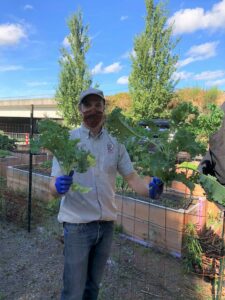
Prior to initiating on-farm trials with our Sammamish Valley farm partners, WWT conducted a pilot study in collaboration with scientists from the University of Washington and Washington State University. The study compared food crops (carrots and kale) grown with Brightwater recycled water to those grown with Sammamish River water to understand the relative risk and safety of Brightwater recycled water. Over two seasons (2020-2022), we tested the water, crops, and soil for unregulated compounds such as pharmaceuticals and personal care products. The results were reviewed by toxicologists at Intertox, Inc., who concluded that consuming carrots and kale grown with recycled water from Brightwater poses minimal health risks, with exposure levels being a fraction of those from other common daily sources, including comparative crops grown with Sammamish River water in our study.
Another interesting finding was that the nitrogen and phosphorus in recycled water, which can harm water quality when discharged into Puget Sound, actually benefits crops by promoting growth. The carrots and kale grown with recycled water were more productive than those irrigated with Sammamish River water, with an increased mass of 147% in kale and 27% increase in carrots.
Q: What are the long-term sustainability plans for the continued use of recycled water in agriculture beyond the scope of the current project? How will the project facilitate knowledge sharing and adoption of recycled water practices among other regional farms, and what strategies will encourage more farmers to switch to recycled water as a climate-resilient water source?
A: We are working to demonstrate the viability of recycled water as an alternative irrigation source, particularly for rivers and groundwater, as which are essential for fish habitats. We believe that farmers participating in this demonstration will become advocates for recycled water, driving demand for the expansion of recycled water in the Sammamish Valley and potentially statewide. To facilitate this, we plan to organize meetings and workshops between farmers and other stakeholders, and share information through presentations at community forums, such as farmers’ markets and other agriculture-related gatherings.
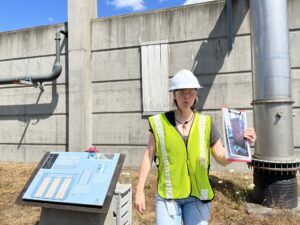
The next phase of the project after these on farm demonstrations involves conducting a delivery infrastructure feasibility study to assess the cost of expanding the pipeline infrastructure, enabling broader distribution of recycled water from Brightwater. Our ultimate goal is to improve infrastructure for consistent and efficient delivery of recycled water to users across the 1000-acre Sammamish APD.
While the Sammamish Valley acts as our workshop to trial area for using recycled water as an agricultural irrigation source, we are also examining the potential expansion across the entire Puget Sound region. To start, we conducted research on the Nutrient General Permit and nutrient reduction strategies for each wastewater treatment plant (WWTP) in the Puget Sound region, focusing on the 27 major pollutant-loading WWTPs and the four facilities that produce Class A recycled water, the highest grade of non-potable water in Washington. This initial research has provided insights into the reporting and nutrient reduction requirements for each WWTP, helping us prioritize engagement about recycled water as a vital non-potable water source. In this research, we also started to map and analyze water use in proximity to each dominant or moderate WWTP loader to identify potential irrigation demand for recycled water across the region.
Currently, our regional wastewater treatment infrastructure is not designed for large-scale water reuse. Thus, scaling up recycled water use will require systemic and infrastructure advancements, as well as the deep engagement of numerous stakeholders including wastewater treatment plants, state and local government, utilities, tribes, water users and others. Looking at climate change projections and the impact on freshwater resources, we believe recycled water can play a key role in future water sustainability and resiliency in Washington, as it has in other parts of the United States.
Q: What programmatic areas are you looking to grow with continued support/funding?
A: WWT is committed to enhancing education around recycled water throughout the state to prepare us for the pressing impacts of climate change on our freshwater resources and meet the growing water demand as population growth continues. We will build awareness, identify demand, and establish the economic and infrastructural framework needed to deliver recycled water.
Starting by collaborating with a small network of farmers trialing and testing how the water source influences their crops will help us build to this larger effort and scaled-up impact. These pioneering farmers will provide valuable insights, and their testimonials will be shared with other agricultural communities through peer-to-peer networks including the Sammamish Valley Grange and King Conservation District. The growing interest and demand will influence subsequent feasibility studies and infrastructure development.
Understanding consumer perceptions and acceptance of recycled water is essential. We engage with consumers through various channels, such as demonstrations at local farms to reach consumers via Community Supported Agriculture (CSA) subscription box pamphlets, surveys at farmers’ markets, and newsletters from our farm partners. Our ultimate goal is to connect with a broader consumer base, including conventional grocery shoppers and restaurant-goers, to share information and build support along the farm-to-table supply chain for this sustainable water source.
Simultaneously, we are building support for recycled water as a one water strategy, among local governments and water users by engaging and collaborating with water utilities and wastewater treatment plants. We are reaching out to wastewater facilities across Puget Sound to understand and enlist their interest in upgrading their systems to produce Class A recycled water to meet the discharge requirements of the Nutrient General Permit. By increasing the number of facilities producing recycled water, we create more opportunities to meet non-potable water demand with this source and reduce reliance on freshwater sources essential for fish habitats. Our goal is for wastewater treatment facilities to adopt recycled water as a priority compliance strategy for Nutrient General Permit while identifying potential demand for this water in priority fish basins.
WWT stands at the forefront of advancing a sustainable water supply strategy for our state. By fostering awareness, building demand, engaging stakeholders, and expanding alternative water sources like recycled water, we enhance Washington’s resiliency in the face of climate challenges.
References:
Snover, A. K., Hamlet, A. F., & Raymondi, R. R. (2013). Climate Change in the Northwest: Implications for Our Landscapes, Waters, and Communities. College of the Environment, University of Washington1. Retrieved from https://cig.uw.edu/wp-content/uploads/sites/2/2020/12/snoveretalsok2013sec6.pdf
USDA, National Agricultural Statistics Service. (2017)California 2017 Census of Agriculture – County Data12. Retrieved from https://www.nass.usda.gov/Publications/AgCensus/2017/Full_Report/Volume_1,_Chapter_2_County_Level/California/st06_2_0029_0029.pdf